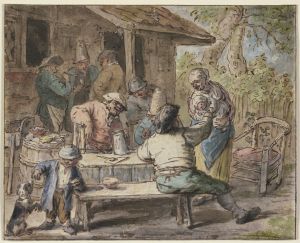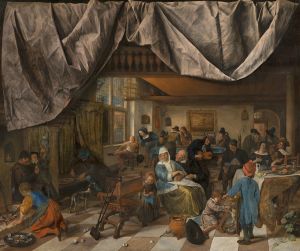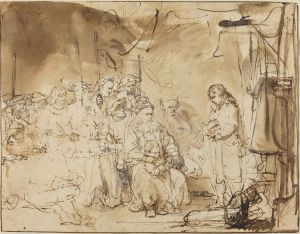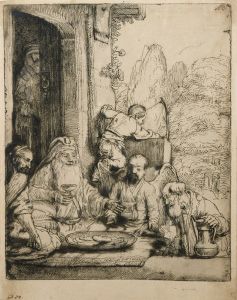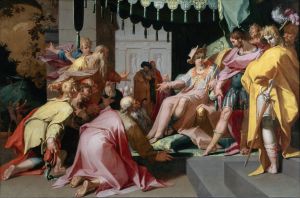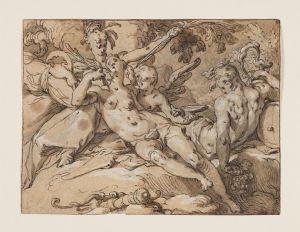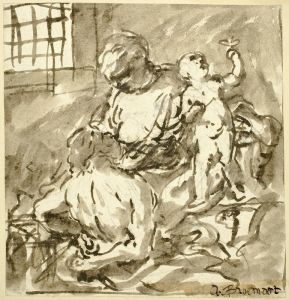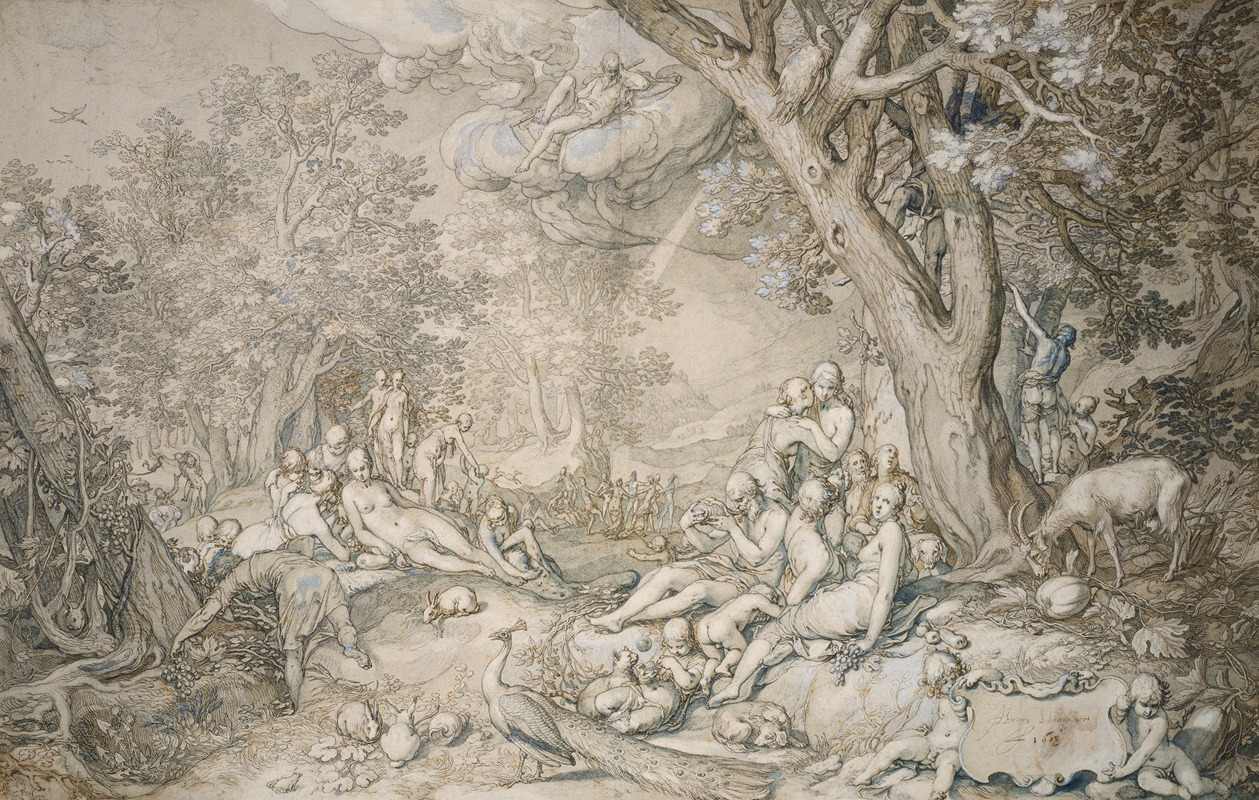
The Golden Age
A hand-painted replica of Abraham Bloemaert’s masterpiece The Golden Age, meticulously crafted by professional artists to capture the true essence of the original. Each piece is created with museum-quality canvas and rare mineral pigments, carefully painted by experienced artists with delicate brushstrokes and rich, layered colors to perfectly recreate the texture of the original artwork. Unlike machine-printed reproductions, this hand-painted version brings the painting to life, infused with the artist’s emotions and skill in every stroke. Whether for personal collection or home decoration, it instantly elevates the artistic atmosphere of any space.
"The Golden Age" is a painting by the Dutch artist Abraham Bloemaert, created in 1625. Bloemaert was a prominent painter and printmaker of the Dutch Golden Age, known for his versatility and his contributions to the development of Dutch Baroque art. Born in 1566 in Gorinchem, Bloemaert was a key figure in the Utrecht Caravaggisti movement, which was influenced by the dramatic lighting and realistic detail of Caravaggio's work.
The painting "The Golden Age" is an allegorical representation of an idealized period of peace, prosperity, and happiness. This concept of a "Golden Age" is rooted in classical mythology and literature, particularly in the works of the Roman poet Ovid, who described a time when humanity lived in harmony with nature, free from toil and suffering.
In "The Golden Age," Bloemaert depicts a pastoral scene filled with figures that embody the virtues and pleasures of this mythical era. The composition is characterized by its harmonious arrangement and the serene expressions of the figures, who are engaged in leisurely activities such as playing music, dancing, and gathering fruit. The landscape is lush and abundant, symbolizing the fertility and bounty of the natural world during this utopian time.
Bloemaert's use of light and color in "The Golden Age" is particularly noteworthy. He employs a warm, golden palette that enhances the idyllic atmosphere of the scene. The soft, diffused light creates a sense of tranquility and timelessness, inviting the viewer to imagine the peaceful existence of the figures within the painting.
The painting reflects Bloemaert's mastery of both figure painting and landscape, as well as his ability to convey complex allegorical themes through his art. His attention to detail and his skillful rendering of textures and forms demonstrate his deep understanding of the human figure and the natural world.
"The Golden Age" is housed in the Rijksmuseum in Amsterdam, which holds an extensive collection of Dutch Golden Age paintings. The museum's collection provides valuable insights into the artistic achievements of this period, and Bloemaert's work is an important part of this cultural heritage.
Abraham Bloemaert's influence extended beyond his own work; he was also a respected teacher who trained many successful artists, including his sons Hendrick and Frederick Bloemaert. His legacy is evident in the continued appreciation of his paintings and the impact he had on the development of Dutch art in the 17th century.
In summary, "The Golden Age" by Abraham Bloemaert is a significant work that exemplifies the artist's skill in creating allegorical scenes that celebrate the ideals of peace, prosperity, and harmony. The painting remains an important part of the Rijksmuseum's collection and a testament to Bloemaert's enduring influence on the art of the Dutch Golden Age.







